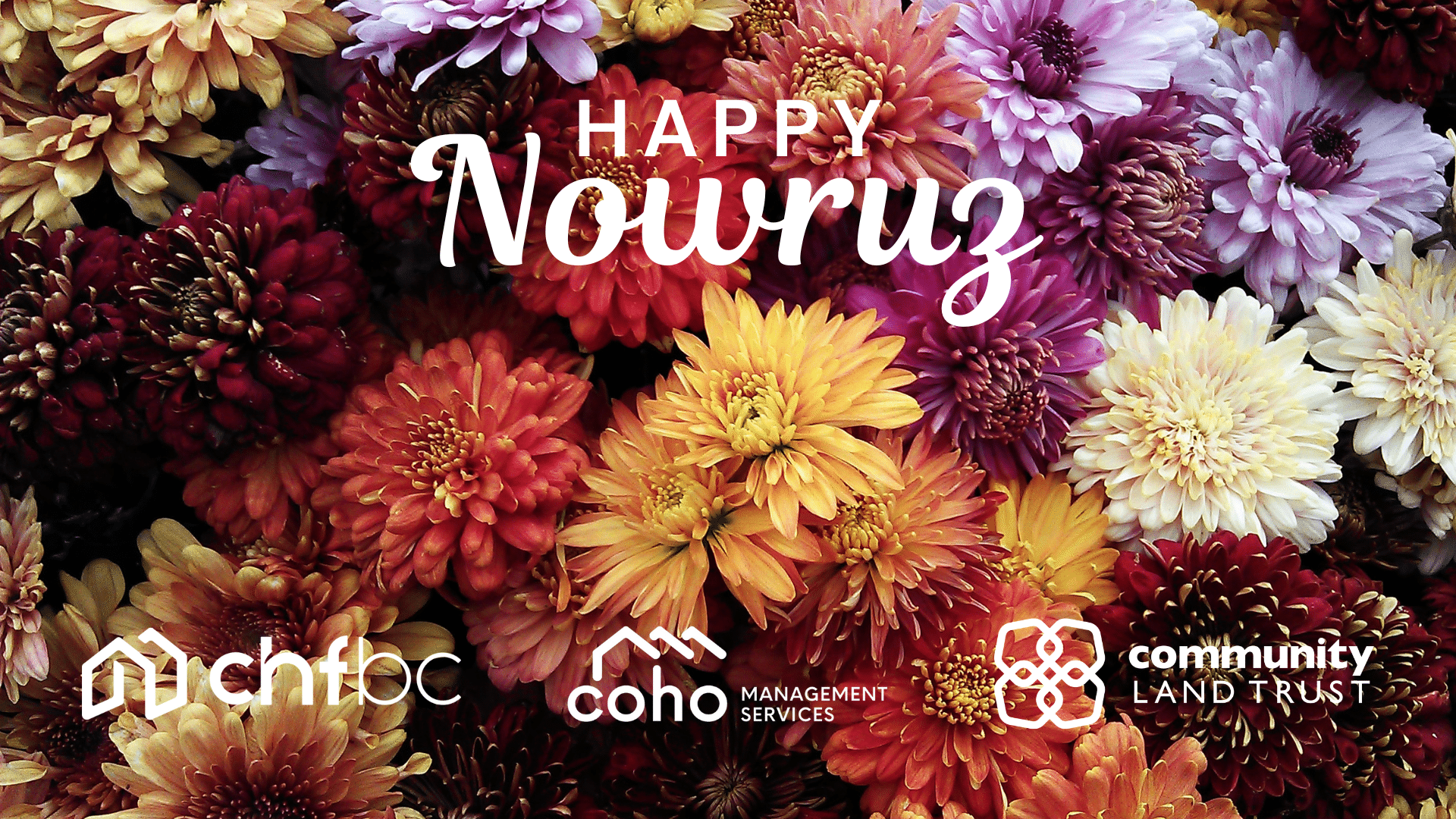
Happy Nowruz from CHF BC
Nowruz (Persian: نوروز ) is the Iranian or Persian New Year. The day of Nowruz originates in the religion of Zoroastrianism and is thus rooted in the traditions of the Iranian peoples. It is largely a secular holiday celebrated by more than 300 million people around the world from various ethnic groups and diverse communities. However, Nowruz remains a holy day for Zoroastrians, Baháʼís, and some Muslim communities.

Nowruz translates into “new day” in Farsi. It is a festival based on the Iranian Solar Hijri calendar and celebrates the arrival of spring. The holiday marks the traditional Iranian New Year, which begins on the vernal (spring) equinox. This is the moment at which the Sun crosses the celestial equator and equalizes night and day. In 2023, it starts on March 20, at 2:24 p.m. PDT.

This year, following Mahsa Amini’s death and the ensuing human rights protests, has been particularly difficult for Iranians. For many Iranians, this year’s celebrations will be considered an act of defiance as they demand respect for their basic human rights and fundamental freedoms, and to preserve and cherish their cultural traditions.
CHF BC stands in solidarity with Iranians, echoing their calls for equality, respect, and justice. We hope that this year’s celebrations are an opportunity to look ahead with optimism for a better future.
Background
The word Nowruz is a combination of Persian words نو now – meaning “new” – and روز ruz – meaning “day“. Pronunciation varies among Persian dialects, with Eastern dialects using the pronunciation [noːˈɾuːz] (as in Dari and Classical Persian, whereas in Tajik, it is written as “Наврӯз” Navröz), western dialects and Tehranis. A variety of spelling variations for the word nowruz exist in English-language usage, including norooz, novruz, nowruz, navruz, nauruz and newroz.
Nowruz is the first day of Farvardin, the first month of the Iranian solar calendar; the official calendar in use in Iran as well as Afghanistan. This day falls on the first day of spring. In the 11th century CE the Iranian calendar was reformed to fix the beginning of the calendar year, i.e. Nowruz, at the vernal (spring) equinox. Accordingly, the definition of Nowruz given by the Iranian scientist Tusi was the following: “the first day of the official New Year [Nowruz] was always the day on which the sun entered Aries before noon.”

Traditions
Nowruz symbolizes a time of renewal and recommitment to community. It heralds the arrival of the new year as it ushers out the hardships of the previous seasons and brings hope for the future. The holiday plays a significant role in strengthening the ties among peoples based on mutual respect and the ideals of peace, generosity, and good neighborliness.

Traditional customs of Nowruz include fire and water, ritual dances, gift exchanges, reciting poetry, symbolic objects and more. These customs differ between the diverse peoples and countries that celebrate the festival. As part of Nowruz, space is set aside for a “haft-seen,” which is a collection of at least seven items that start with the letter ‘s.’ Additionally, other items are included, each symbolizing a different hope for the new year. These include lotus tree fruit for love, candles for enlightenment, apples for beauty, and vinegar for patience and wisdom. These traditions focus on community, family, and starting anew with a blank slate.
Nowruz is also considered the most important holiday in Iran, as it is the official New Year of the country. In Iran, Nowruz is an official holiday lasting for 13 days,. During this time, most national functions, including schools, are closed and festivities take place.
The United Nations officially recognized the “International Day of Nowruz” with the adoption of Resolution 64/253 in February 2010.